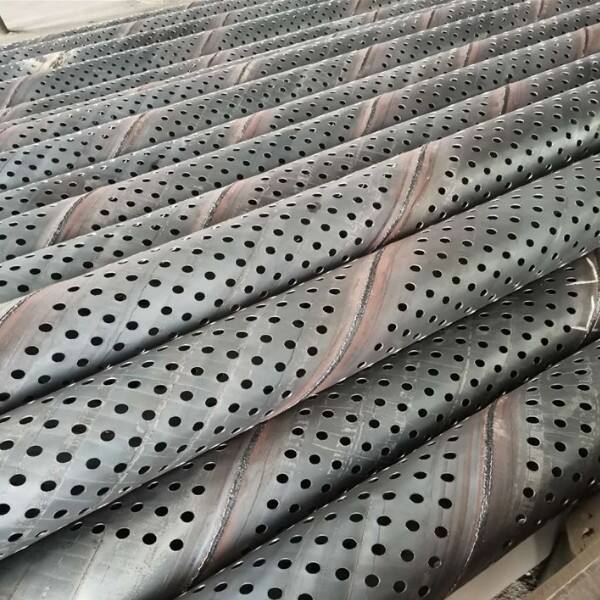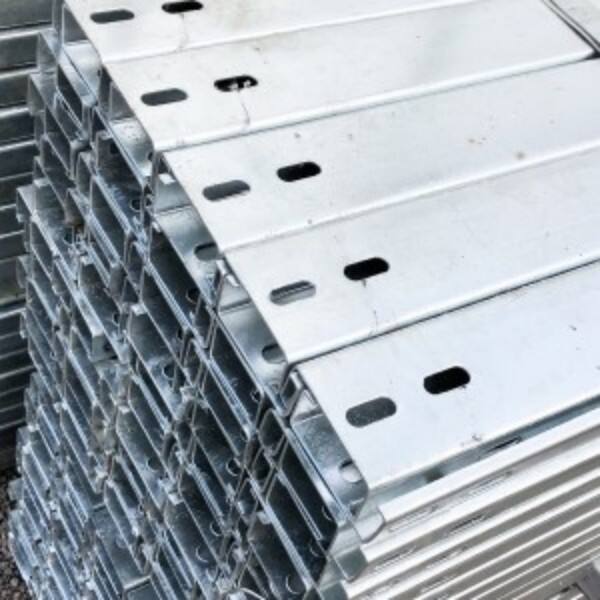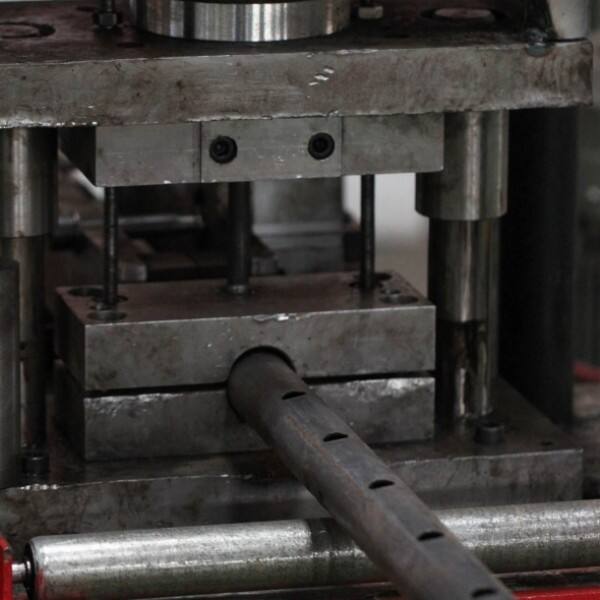Hole Steel Pipe is a processing method that uses mechanical equipment to
punch a hole of a certain size in the center of a steel pipe to meet different
industrial needs.
Classification and process of steel pipe perforation
Classification: According to different factors such as the diameter of the hole, the number of holes, the location of the holes, etc., steel pipe perforation processing can be divided into single-hole perforation, multi-hole perforation, round-hole perforation, square-hole perforation, diagonal-hole perforation, and so on, there are many different types.
Process flow: The main process flow of steel pipe drilling includes equipment commissioning, selecting the appropriate drill or mold, setting up the processing parameters, fixing the steel pipe, and carrying out the drilling operation.
Material suitability and application field of steel pipe perforation
Material applicability: steel pipe perforation processing is applicable to steel pipes of various materials, such as carbon steel, stainless steel, copper pipe, aluminum pipe, etc.
Application areas: steel pipe perforation processing has a wide range of applications in construction, aviation, automotive, machinery manufacturing and other fields, such as component connection, ventilation and exhaust, oil line penetration and so on.

Steel pipe perforation processing technology
(1) Saw blade perforation: suitable for punching small holes, the advantage of which is fast speed and low cost, the disadvantage of which is that the hole precision is not high.
(2) Cold stamping punching: applicable to different sizes of holes, the advantages of which are high precision of holes, hole edges are smooth, the disadvantage is that the equipment price is high, and it takes a long time to change the mold.
(3) Laser punching: suitable for high precision and high quality holes, its advantage is high precision of holes, hole edge is smooth, the disadvantage is that the equipment is expensive, high maintenance cost.
Steel pipe punching processing equipment
(1) Punching machine: Punching machine is a kind of professional steel pipe perforation processing equipment, which is suitable for high-volume, high-efficiency and high-precision steel pipe perforation processing.
(2) Drilling machine: Drilling machine is a kind of common steel pipe perforation processing equipment, suitable for small batch, low precision steel pipe perforation processing.
(3) Laser drilling machine: laser drilling machine is a kind of high-precision, high-quality steel pipe drilling processing equipment, suitable for high-end steel pipe drilling processing field.

All of the above equipment are available in both automated and manual operation, according to different processing needs and equipment costs, you can choose the right equipment to complete the steel pipe punching processing tasks.
(1) Dimensional accuracy control: The dimensional accuracy of steel pipe punching directly affects its subsequent application effect. In the processing process, the diameter, wall thickness, hole diameter and other dimensions of the steel pipe need to be accurately controlled to ensure that it meets the dimensional accuracy standards required by customers.
(2) Surface quality control: the surface quality of steel pipe perforation has an important impact on the application of steel pipe and aesthetics. In the process of processing, we need to control the quality of the surface of the steel pipe in terms of smoothness, no burr, no cracks, etc.
(3) Hole position accuracy control: the hole position accuracy of steel pipe drilling directly affects its subsequent application effect. In the processing process, it is necessary to control the precision of the hole distance, hole diameter, hole position and other aspects of steel pipe drilling.
(4) Processing efficiency control: steel pipe perforation processing needs to take into account the problem of processing efficiency. Under the premise of controlling the quality, it is necessary to optimize the processing parameters and improve the processing efficiency to meet the requirements of customers.
(5) Detection and testing: The dimensional accuracy, surface quality, hole accuracy, etc. of the steel pipe need to be detected and tested during the processing to ensure that it meets the customer's requirements and standards. Commonly used detection means include three-coordinate measurement, optical measurement, ultrasonic flaw detection, magnetic particle flaw detection and so on.

 Hot News
Hot News2024-09-05
2024-07-23
2024-06-14
2024-08-07
2024-05-23
2024-05-21